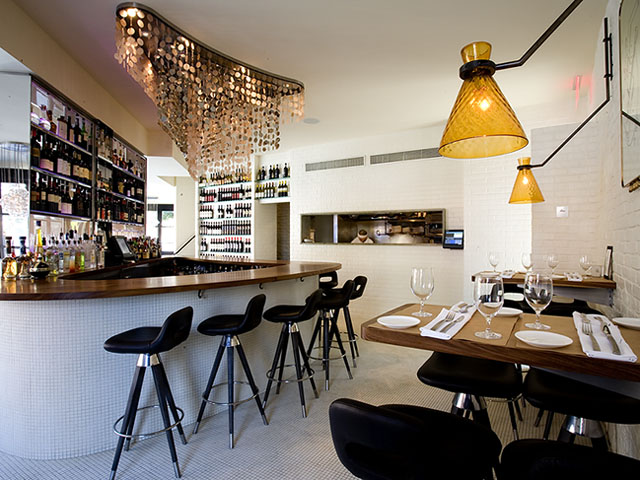Beacon
 Wednesday, February 11, 2009 at 09:46PM
Wednesday, February 11, 2009 at 09:46PM ![]()
Note: Click here for a more recent visit to Beacon.
Beacon, a midtown steakhouse, was completely off my radar until eGullet’s “Fat Guy” raved about the tasting menu served on Thursday nights. It’s currently $98 for 12 courses, including winees. That would be a remarkable value even if a few of the courses were duds—not that they are. Subsequent reports bore out Fat Guy’s recommendation (Frank Bruni reviewed it late last year), but it was impossible to get in (only 6 seats, only on Thursdays), and I don’t usually fancy such a heavy meal on a weeknight.
![]() From the beginning, Beacon was more than just an average steakhouse. In the Times, William Grimes awarded two stars in 1999: “Organized around an open kitchen and a huge wood-burning oven, it delivers uncomplicated, big-flavored food, emphasizing fresh, seasonal ingredients. That’s all, and that’s enough.”
From the beginning, Beacon was more than just an average steakhouse. In the Times, William Grimes awarded two stars in 1999: “Organized around an open kitchen and a huge wood-burning oven, it delivers uncomplicated, big-flavored food, emphasizing fresh, seasonal ingredients. That’s all, and that’s enough.”
Like many restaurants, Beacon has felt the bite of the recession. The $35 “Restaurant Week” menu has been extended at least until the end of February, and perhaps indefinitely. Deals abound, such as a $44 pp. family style meal on Sunday evenings, with bottles of wine under $35, and no corkage if you bring your own.
The normal menu features dry-aged Niman Ranch steaks, but there’s a wide variety of other choices, most of them revolving around the wood-burning oven.
The chef/owner, Waldy Malouf, has a lot of seats to fill. On a recent Tuesday evening, the vast tri-level space was perhaps 60% occupied, which is better than many restaurants, but probably not good enough, given midtown rents. I also suspect that many patrons are doing as we did, and ordering at the bottom end of the menu.
A mixed green salad with herb vinaigrette and goat cheese (below left) was all you could ask of a $13 salad. The burger and fries ($21; below right) were terrific. It’s Niman Ranch beef and tastes dry-aged. I couldn’t help but compare it to the over-hyped LaFreida Black Label blend served at City Burger.
![]()
![]()
The Beacon burger is $5 more than the City Burger product. But City Burger is a fast-food joint with styrofoam containers, plastic trays, and minimal counter seating. Beacon is a full-service restaurant, with waiters, white tablecloths, cloth napkins, silverware, three kinds of homemade bread, etc. On top of that, their burger was better (thicker, juicier, tastier) than the one Mr. Cutlets has been shilling at City Burger, and their fries were better too.
It was about as impressive as a salad, burger, and fries can be.
Beacon (25 W. 56th Street between Fifth & Sixth Avenues, West Midtown)























